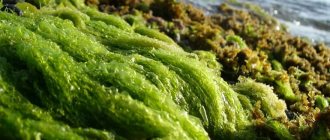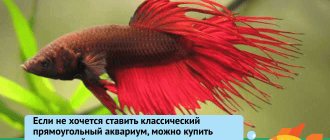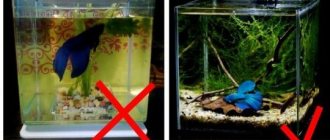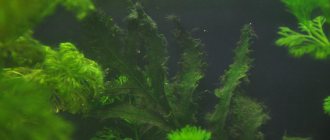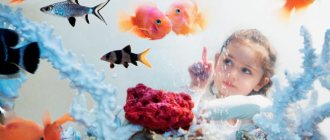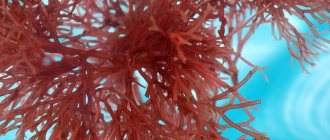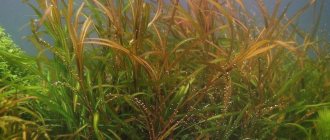Algae is a unique product in many respects. Did you know that sea “plants” contain almost 14 times more calcium than dairy products? Did you know that red algae contains 200 times more iron than beets and 8 times more than beef, and brown algae contains almost 150 times more iodine than any other vegetable? But this is not the most amazing thing about the incredible properties of algae.
What are edible algae and what types are there?
Algae are living organisms that inhabit sea and fresh water. Some of them are single-celled, while others closely resemble land plants, although from a biological point of view they are not. The algae belong to the genus Algae. Scientists say there are more than 30 thousand varieties of these organisms. But not all of them are considered edible.
Content:
- What are edible algae and what types are there?
- Chemical composition
- Beneficial features
- What are the benefits of different types of algae?
- Benefits for weight loss
- Possible dangers from consumption
- Areas of application
- How to cook properly
- Use in cosmetology
Those that end up on our tables can be divided into 3 groups: brown, red, green.
The most famous representatives of brown algae are kelp, hijiki, fucus, limu, wakame (or chuka). Laminaria is a well-known seaweed. This algae is the absolute champion in the world in terms of iodine content.
Red algae are porphyra, dals, rhodemia, carrageenan. Porphyra is one of the most popular varieties of edible algae. Well, who hasn’t heard of nori - seaweed traditionally used to make sushi? And nori is porphyry algae.
Green sea plants used as food are the well-known spirulina, umi budo (also known as sea grapes), ulva (also known as sea lettuce), and monostroma (aonori). By the way, the uniqueness of spirulina is that it contains an incredible amount of protein - at least 3 times more than meat.
Chemical composition
The chemical composition of different types of edible algae differs slightly. But in general terms, the set of useful elements in red, brown and green varieties is similar.
So, any algae can be considered a source of vitamins A, , , , and most substances from group B. Also, these aquatic “plants” contain many micro- and macroelements, but most of all, as they said, iodine (every kilogram of algae contains within 1 g of iodine). In addition to it, there is molybdenum, cobalt, vanadium, zinc, silicon, phosphorus, potassium, magnesium and many other components. By the way, vanadium, which reduces cholesterol levels in the liver, is a component unique to food products. In addition to algae, it is also found only in beekeeping products. It is also interesting that in terms of the set of minerals, seaweed is very similar to the chemical composition of human blood.
In addition, these organisms are rich in polyunsaturated fatty acids, chlorophyll, phenolic compounds, phytosterols, plant enzymes, as well as lignins, pectin and other biologically valuable components.
But the calorie content of different types of algae can differ significantly. The record holder in terms of nutritional value is nori, 100 g of which contains almost 350 kcal. The lowest energy value (approximately 25 kcal/100 g) is found in algae of the Limu, Ulva and Dals species. Porphyra and fucus contain 35 kcal each, kelp and wakame - within 45 kcal, kombu and spirulina - about 77-79 kcal, and 100 g of chuka algae contains about 90 calories.
Beneficial features
The history of the mass use of algae as a healthy food product began relatively recently. About half a century ago, humanity learned that marine “plants” have high biological value and are a source of extremely important substances. Today, researchers say with confidence that people who regularly use this product almost never get sick, the aging process in their bodies slows down, and their level of intelligence is above the statistical average.
The rich chemical composition of algae gives them a huge list of benefits. For the human body, they can play the role of a broad-spectrum substance. Including:
- anti-inflammatory;
- immunomodulatory;
- antiviral (the benefits of algae for people with immunodeficiency virus have been proven);
- antibacterial.
In addition, alginates give them the ability to cleanse the body of radionuclides and heavy metals, and protect against the effects of radiation. Based on this, algae, and especially kelp, are considered to be a preventative against certain types of cancer. In addition, chlorophyll and carotenoids give aquatic “plants” antimutagenic properties, and the antioxidant substances they contain make the product useful for counteracting free radicals.
Brown algae extract is often included in drugs against diabetes, migraines, rheumatism, to strengthen the immune system and improve the functioning of the endocrine system. Dietary supplements with sea “plants” are useful for cleansing the body of toxic substances and improving blood circulation. Being a rich source of fluoride, seaweed is beneficial for strengthening bones and tooth enamel. The benefits of using the product will undoubtedly be felt by the nervous system, brain, heart, pancreas, genitourinary system, and muscles. It is also believed that these amazing organisms alleviate hangovers and save pregnant women from toxicosis.
Negative impact
Algae is dangerous for the aquarium. Many people who are far from aquarium hobby confuse this department with aquatic plants. We will list the main differences in the next section of the article.
Which species are dangerous?
The most common parasites in an aquarium are green, brown algae and cyanobacteria.
The most dangerous representatives:
- black beard;
- flip-flop or deer antlers;
- filamentous – the so-called “thread”;
- Cladophora;
- spirogyra;
- xenococus - that very “green coating”;
- blue-green (unite many Families, reminiscent of turquoise, greenish-blue or jade threads and moss).
All these representatives belong to the protozoa: unicellular or colonial. They grow at a catastrophic speed, taking nutrients from the water and leading to oxygen oversaturation, causing illness and death of fish and arthropods. Sometimes the entire wall and soil can be covered with a carpet of their protozoa.
Why do they lie in the aquarium?
The reasons for the appearance of these creatures can be different, but are most often associated with improper care of the aquarium and poor water quality.
Main reasons:
- Incorrect lighting (use of lamps of inappropriate power and spectrum, excess lighting, too long or short daylight hours).
- A large amount of dead organic matter, waste and other debris.
- Malfunction of the filter, aerator (compressor) and other equipment.
- Infection with purchased plants and fish from other aquariums.
- Disturbances in the balance of the mini-ecosystem due to the introduction of fertilizers, antibiotics and other unusual chemicals into the water.
Most of these causes can be eliminated at the very beginning of their manifestation if you properly care for the tank and its inhabitants.
How to get rid
If the aquarium is overgrown with green algae, you need to take drastic measures immediately. To prevent the water from “blooming” and new brown algae appearing, it is necessary to take a number of measures.
These include:
- standardization of light conditions;
- water change;
- troubleshooting equipment;
- combating with the use of special chemicals that suppress the development of algae and bacteria - use only in extreme cases.
It is very important to dose fish food correctly so that the food does not decompose and turn into nitrates, which provoke the rapid development of protozoan plants.
Prevention methods
It is always easier to prevent a problem from occurring than to think about ways to solve it later.
To prevent algae from appearing, it is enough to follow a number of simple rules:
- normalize the light regime - no more than 12 hours a day;
- regularly check the performance of the filter;
- clean the aquarium on time;
- quarantine new animals and plants after purchasing even from a trusted breeder or pet store.
Experienced aquarists advise familiarizing yourself with the basics of ecology in order to know what processes in aquatic systems are interconnected, and what the disruption of one link can lead to.
What are the benefits of different types of algae?
In many ways, the benefits of different types of algae are similar, but still each variety is unique, and in some cases has no equal among its “sisters”.
Kelp
Seaweed is one of the most common and accessible varieties of brown seaweed that inhabits the waters of the Pacific and Arctic oceans. Kelp, as a rule, lives at a depth of 4-10 meters. Some are almost 20 m long.
This product is useful as a source of iodine, which is known to be extremely beneficial for the endocrine system. For this reason, kelp is considered one of the healthiest products for people with thyroid dysfunction, as well as for the prevention of endemic goiter. In addition, seaweed stimulates metabolism, prevents salt deposition and the development of sclerosis, helps with obesity and after radiation exposure. Kelp is also an excellent source of vitamin C, which is found in sea “plants” almost as much as in citrus fruits. Rich in vitamin K, kelp is beneficial in preventing excessive blood clotting and excessive platelet production. In addition, kelp is useful for lowering cholesterol, which has earned it the reputation of being a useful product for heart patients. And also, so far only in laboratory conditions, the effectiveness of sea kale in slowing down the spread of sarcoma has been proven.
Fucus
Fucus is a coastal algae that lives in the Atlantic and Arctic oceans. These brown “plants” are known for their extremely rich mineral and vitamin composition. Only 10 g of fucus contains:
- iron – as in 1 kg of spinach;
- iodine - as in 11 kg of cod;
- vitamin D – as in 10 kg of apricots;
- vitamin A - as in 100 g of carrots.
This type of sea grass is known for its ability to remove toxins, stimulate blood circulation, and improve mineral metabolism. Fucus can also be used as a natural diuretic. When researchers say that seaweed resembles human blood in its chemical composition, they primarily mean Fucus vesiculosa. In this product, scientists found a unique substance called fucoidin. As it turned out during research, this substance has immunomodulatory, antitumor and antiviral properties. But the most amazing thing is that fucoidin helps the human body resist HIV infection. In addition, fucus is useful for the treatment of certain diseases of the musculoskeletal system and for the mineralization of bone tissue.
Spirulina
The peculiarity of this variety of green algae is its rich protein content. 100 g of dry product contains almost 70 g of easily digestible protein, whose biological value is almost 3 times higher than soy proteins. In addition, spirulina contains 18 amino acids, including 8 essential for humans.
Spirulina is one of the most popular algae in the world. But it reaches most consumers in the form of dietary supplements or semi-finished products. The thing is that the natural habitat of these “plants” is limited to lakes in Africa and Mexico with alkaline water. By the way, even the ancient Aztecs regularly ate this greenery. Given the incredibly high demand for spirulina, humanity has learned to grow it under artificial conditions, and today they are successfully doing this in Mexico and France.
Ulva
Another name for these green algae is sea lettuce. The first to eat ulva were the inhabitants of Japan, China, Scandinavia, Ireland and France. This product is an exceptional source of iron, protein and fiber.
Porphyra (nori)
Porphyra is a very common algae. Lives in different seas, including the Black, Baltic, Mediterranean, and White. This representative of red aquatic “plants” is useful for preventing atherosclerosis and lowering cholesterol levels. These properties of nori make them useful for people with disorders of the cardiovascular system. In addition, nori is known as a source of vitamins A, D and B12. Traditionally used in Japanese, Korean and Chinese cuisines.
Lithothamnia
The extremely rich mineral and vitamin composition is the first thing that comes to mind when it comes to red coral algae lithothamnia. Researchers have counted more than 30 minerals in this product, including incredibly high portions of magnesium and iron. Thanks to this, lithothamnia is considered one of the most useful products for the prevention and treatment of anemia.
Anfeltsia
This red inhabitant of the Black Sea, as well as the outer seas of the Far East and North, resembles small spherical bushes. It usually grows near the coast at a depth not exceeding 5 m. It is ahnfeltia that is the basis for the production of a natural thickener known as agar-agar. This substance is used in marmalade, marshmallows and some other products.
In medicine, ahnfeltia is known as a natural medicine against breast cancer. But overuse of the product can cause severe diarrhea.
Phyllophora ribbed
This is a red algae from the Black Sea, common where rivers flow into the sea. For many years it served as a source of iodine. It is actively used in the beauty industry as a product that effectively slows down aging.
Biological balance
Achieving complete biobalance is difficult, but possible. Normally, a reservoir, like a large natural reservoir, must maintain the circulation of substances. All dead remains must be broken down by beneficial bacteria and reduced to substances that can be consumed by plants, then produce energy through photosynthesis and again produce biological matter - most often starch and saccharides. Next, the fish eat the plants, digest them, build their bodies from amino acids, produce waste, and the process begins again.
Nitrifying bacteria are responsible for this balance. We will not fully describe the processes produced by these microorganisms: it is so complex that it deserves a whole series of articles. In nature, everything is harmonious, so the balance is established by itself, our task is just not to disturb it inadvertently or intentionally.
Maintaining balance
The main principle is not to create a disaster for the aquarium environment.
Basic principles of maintaining balance in an aquarium:
- refusal to use fertilizers and antibiotics without good reason;
- regular cleaning and water changes in compliance with all the rules for carrying out these manipulations;
- proper feeding of fish and maintaining their health;
- compliance with quarantine before adding new pets to a common aquarium;
- constant testing and monitoring of water quality;
- loosening the soil, improving living conditions for nitrifying bacteria.
It is important to remember that an aquarium is not just a beautiful vessel with fish. This is an integral but fragile organism that leads its own special life. Any changes are consequences of an imbalance in this system. Any problem manifests itself before it becomes a disaster. Therefore, you cannot rush to the other extreme and try to artificially control the entire chemical composition of water and its physical properties. If filamentous algae appears, you should not immediately use chemicals; it is better to try to get rid of the pests using more gentle methods.
Benefits for weight loss
In some types of algae, researchers found an enzyme also found in pineapples - the same one that causes the breakdown of fats. On the other hand, sea “plants” are also useful in that by consuming them with plenty of water, you can get rid of the feeling of hunger for a long time. This happens because algae, absorbing liquid, swell and create a feeling of fullness in the stomach. And all this against the backdrop of a low calorie content, but a rich mineral and vitamin composition.
To speed up the breakdown of fats, it is useful to drink tea brewed from a collection of herbs and seaweed. To do this, take equal proportions of corn silk, dandelion, buckthorn, cystoseira bearba, bearberry, fireweed, fennel, licorice, alfalfa and algae (preferably kelp and fucus). Take 2 tablespoons of the mixture per liter of boiling water and leave for at least an hour. You need to drink tea 5 times a day, 100-150 ml. The course of treatment should not last more than 2 months. After a 30-day break, repeat.
Adaptation to terrestrial life
According to scientists, algae have adapted to terrestrial life, and evolution began from green representatives of single-celled organisms.
Further, the diversity of forms through the separation of functions of individual elements of the body structure of algae, division and fragmentation, adaptation to more complex environmental conditions helped the emergence of multicellular representatives of this kingdom. If you are tired of videos with ordinary sex, then be sure to follow the link, where there is a cool anal movie with lustful sluts who are fucked not only in the pussy, but also in the ass, sometimes stuffing two dicks into their ass at once.
Areas of application
Algae is one of those products that people use in a variety of areas. The most obvious use is as food. In addition, in the food industry, kelp and fucus are raw materials for algin (alginic acid, E400), which is used in confectionery as a thickener and stabilizer. E400 can usually be seen in some candies, ice cream, yogurts and even beer. Another representative of the E-components, obtained from red algae, is E406, also known as an agar-agar thickener.
Life cycle
They are capable of photosynthesis, as a result of which they obtain organic substances, although a number of species absorb ready-made organic substances from the external environment. As in higher plants, starch is used as a reserve substance, as well as glycogen (the latter is typical for animals).
Like plants, spores are capable of both sexual and asexual reproduction.
Reproduction
Algae have different methods of reproduction, the main ones being vegetative, asexual and sexual. Vegetative activity is carried out by cell division or reproduction of individual sections of the thallus. With asexuality, new spores are formed in the thallus, which germinate into new individuals. Spores are divided into zoospores (motile) and aplanospores (immobile). Finally, during sexual reproduction, sex cells are formed - gametes, after the fusion of which zygotes are formed, from which new individuals appear.
How to cook properly
It is best to eat fresh or dried seaweed. They can be prepared in several ways: after soaking, adding to ready-made dishes, steaming or grinding the dry product, mixing with spices and adding to food in this form.
Best materials of the month
- Coronaviruses: SARS-CoV-2 (COVID-19)
- Antibiotics for the prevention and treatment of COVID-19: how effective are they?
- The most common "office" diseases
- Does vodka kill coronavirus?
- How to stay alive on our roads?
Today, algae is an affordable product in supermarkets. Moreover, it is presented in a variety of forms: frozen, salted, pickled, dried, dried, in the form of ready-made salads. When purchasing dried seaweed, it is important to carefully check the tightness of the packaging. But the white coating on the product should not be scary - this is a sign of properly prepared “plants”. Before use, dried seaweed is poured with water for a while, after which it is added to salads, broths, snacks, and rolls.
Residents of Asian countries were the first to include algae in their diet. This product takes pride of place in oriental cuisine. But sushi is far from the only dish in which sea “plants” look organic. This exotic goes well with mushrooms, beets, apples; seaweed can be stewed in oil, and it also makes a good appetizer for strong alcohol.

